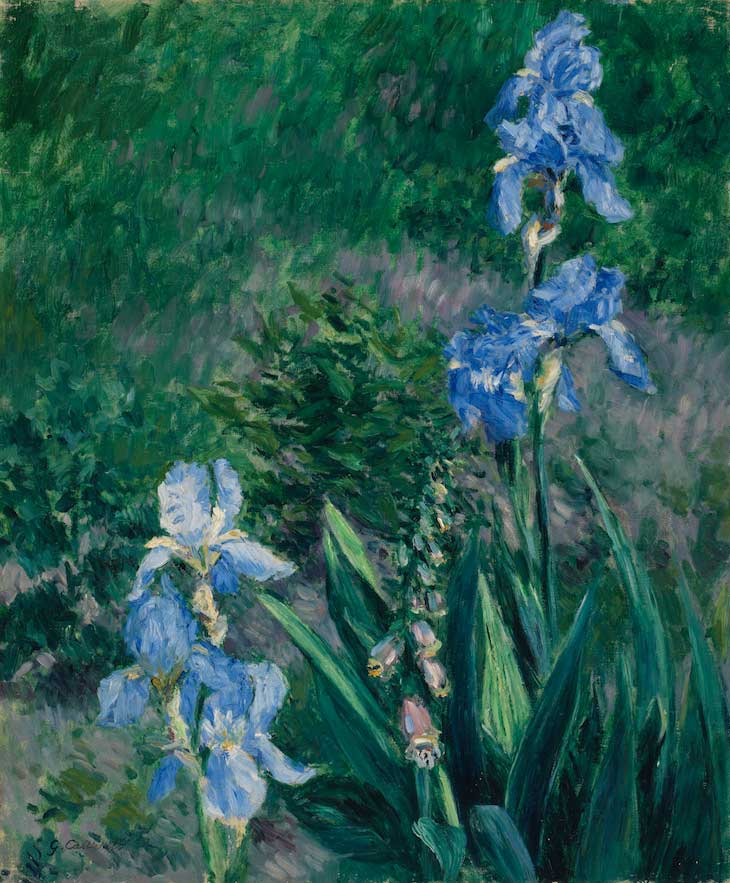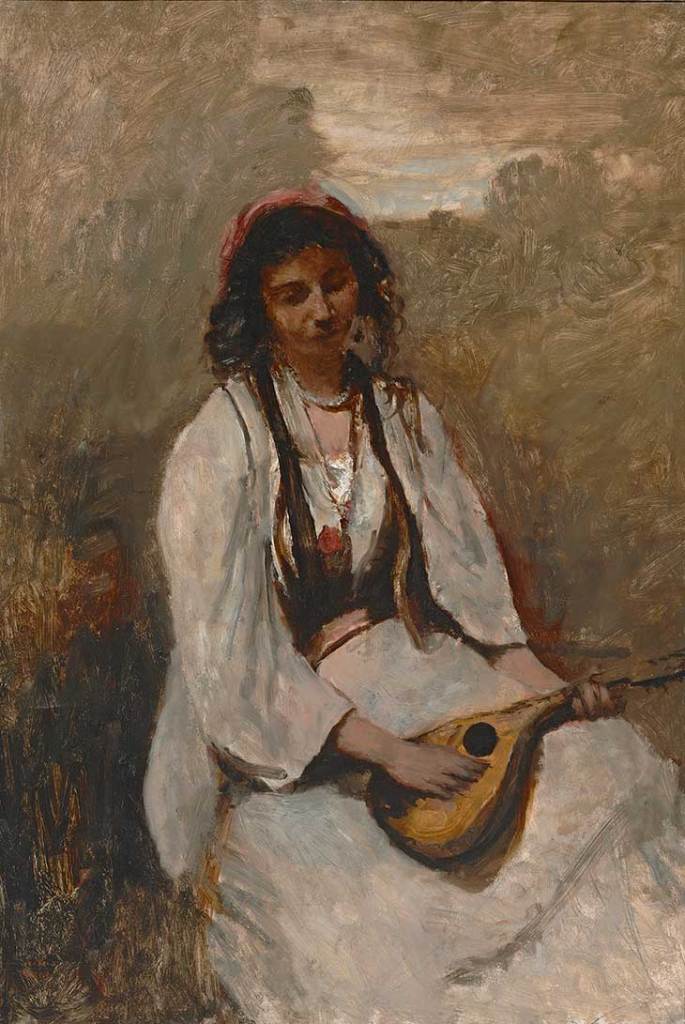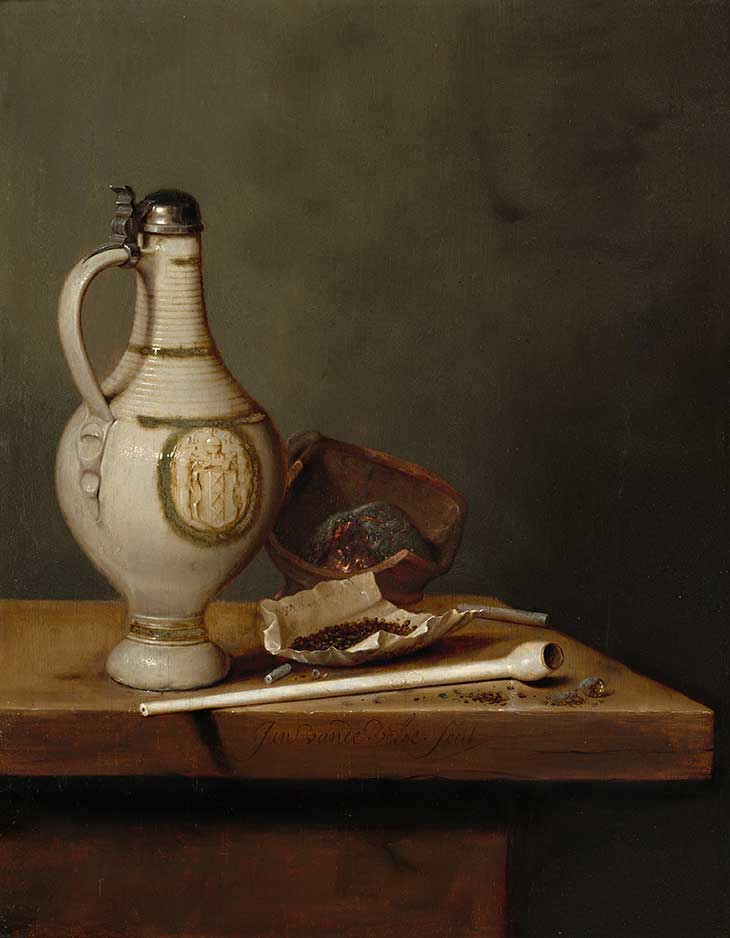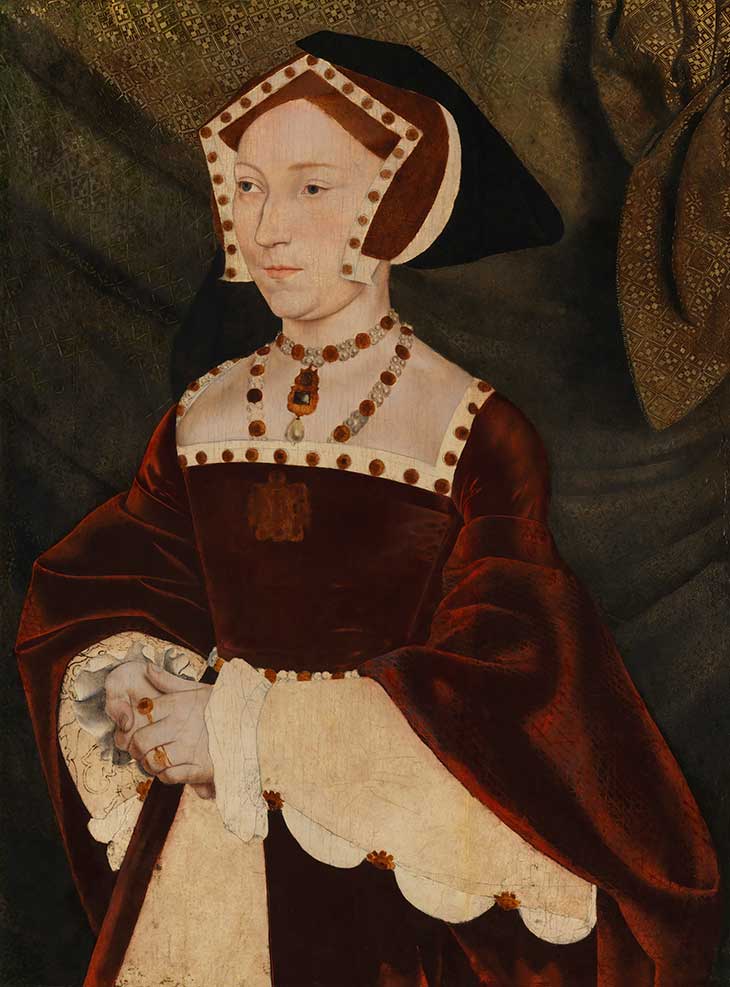A round-up of the best works of art to enter public collections recently
Art Gallery of Ontario, Toronto
Blue Irises, Garden at Petit Gennevilliers (c. 1892), Gustave Caillebotte
Best known for his shrewd depictions of modern Parisian life in the 1870s, Caillebotte was also a passionate gardener, exchanging advice and reflections in letters with his close friend Claude Monet. This late study of blue irises against a lush background of green was completed in the garden he designed in the rural Parisian suburb of Petit Gennevilliers. With its play of surface textures and strange perspective, the work pre-empts Monet’s later move toward abstraction in his Nymphéas. It is the first work by the artist to be acquired by a major Canadian institution.
Iris bleus, jardin du Petit Gennevilliers (c. 1892), Gustave Caillebotte. Art Gallery of Ontario, Toronto

Gemeentemuseum den Haag
Farewell to Washington Square (Self-Portrait) (1972), Paul Thek
We are on the outside looking in on this peculiar self-portrait by Paul Thek, but we are no less in the dark than he appears to be. Why is he crouching in his murky studio, clutching at the door handle while he casts a furtive glance over his shoulder? Why is there a half-peeled orange suspended at the centre of the window frame? Visitors to the Gemeentemuseum will have the opportunity to puzzle over these questions, now that the painting has become the third by the American artist to enter the museum’s collection.
Farewell to Washington Square (Self-Portrait) (1972), Paul Thek. Gemeentemuseum Den Haag

High Museum of Art, Atlanta
24 Impressionist, post-Impressionist and modernist paintings
Monet, Matisse, Sisley and Modigliani are among the Impressionist, post-Impressionist and modernist masters represented in this transformational gift of 24 paintings from Doris and Shouky Shaheen, which will go on display in a gallery at the museum, newly named for the couple, later this year. The donation also includes works by older painters, including a landscape by Monet’s early mentor, Eugène Boudin, and an Orientalist portrait by Corot.
La bohémienne à mandoline assise (c. 1860s–70s), Jean-Baptiste-Camille Corot. High Museum of Art, Atlanta

National Galleries of Scotland, Edinburgh
Tableau Vivant (1954), Dorothea Tanning
Dorothea Tanning held on to this depiction of Katchina, her beloved Lhasa Apso, hanging it above her desk, for six decades. It was included in the Surrealist artist’s first London and Paris exhibitions in 1954 and ’55 and almost every major show of her work that followed, and before her death in 2012 it was one of the few paintings she specified could only be sold to a museum. It has become the first work by Tanning to enter the exceptional collection of Surrealist work at the Scottish National Gallery of Modern Art, which includes major works by Max Ernst, Miró, and Giacometti.
Tableau Vivant (Living Picture) (1954), Dorothea Tanning. National Galleries of Scotland

National Gallery, London
View on the River Seine – Morning (c. 1825), Richard Parkes Bonington
A friend of Delacroix and an avid enthusiast of French art, who did much to popularise Romantic painting in Britain, Bonington died at 25, leaving few works to show for his tremendous talent. This misty morning view of the Seine, completed during Bonington’s brief period of artistic maturity, is the second work of his to be acquired by the National Gallery; it has been allocated to the museum through the Acceptance in Lieu scheme.
View on the River Seine – Morning (c. 1825), Richard Parkes Bonington. © The National Gallery, London

National Gallery of Art, Washington, D.C.
Still Life with Stoneware Jug and Pipe (1650), Jan Jansz van de Velde III
This small, exquisitely observed study in texture – the smooth porcelain jug glowing by the light of the burning coal; flakes of tobacco pouched in paper upon the wooden table – is the NGA’s first work by Van de Velde III, a still-life painter of the Dutch Golden Age. The tabakje (‘tobacco still-life’) became a popular genre in the 17th century, after the plant had been introduced from the Dutch colonies.
Still Life with Stoneware Jug and Pipe (1650), Jan Jansz van de Velde III. National Gallery of Art, Washington, D.C.

National Portrait Gallery, London
Jane Seymour (c. 1537), workshop of Hans Holbein the Younger
This oil portrait – a contemporaneous copy of a famous picture by Hans Holbein the Younger, in the Kunsthistorisches Museum, Vienna – is the first painted depiction of Henry VIII’s favourite wife to enter the collection of the National Portrait Gallery. It was acquired at auction in 2016 from a private collection in Cambridge; its former owners believed it was a Victorian copy. Subsequent analysis suggests that the work, which appears to be unfinished, may have originated in Holbein the Younger’s workshop. It has now gone on public display for the first time, after extensive restoration.
Jane Seymour (c. 1540), attrib. workshop of Hans Holbein the Younger. © National Portrait Gallery, London



